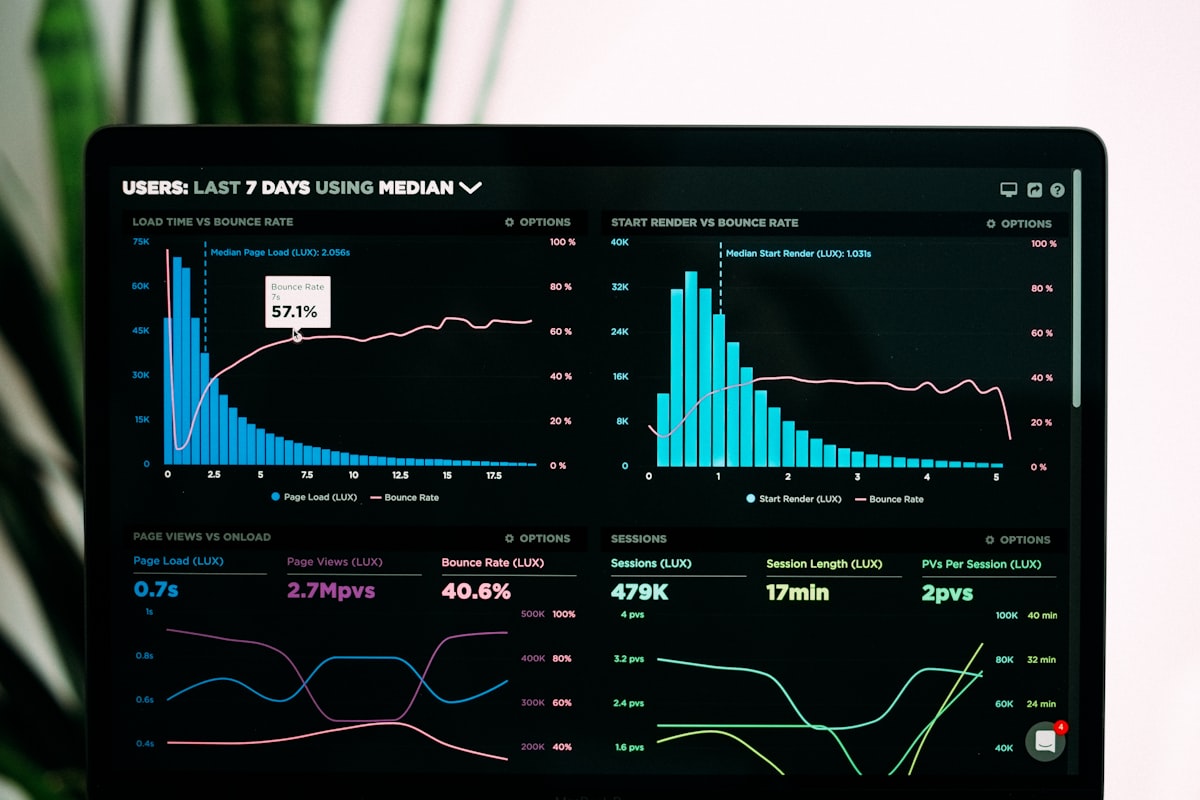Boost Your Business: How to Use Google Ads for Smart Lead Generation

Master Google Ads lead generation with our complete guide. Learn campaign setup, audience targeting, optimization strategies, and proven techniques to turn clicks into customers and grow your business effectively.
In a world where consumers make over 8.5 billion searches on Google every single day, your potential customers are actively looking for solutions you provide right now. While social media trends come and go, and organic reach becomes increasingly challenging, Google Ads remains the marketing powerhouse that can transform your business overnight. Whether you're a small startup looking for your first customers or an established business wanting to scale, Google Ads offers something no other platform can match: the ability to reach people at the exact moment they're ready to buy.
Here's the reality: while everyone's talking about the latest social media algorithm changes, smart businesses are quietly building empires with Google Ads. The platform's targeting precision has only gotten better since 2025, its reach spans virtually every device and location on Earth, and unlike organic marketing that can take months to show results, Google Ads can start driving quality leads to your business within hours of launching your first campaign.
What Is Lead Generation in Digital Marketing?
Think of lead generation as the art of turning strangers into potential customers who are genuinely interested in what you offer. It's not about getting random website visitors – it's about attracting people who are likely to actually buy from you. A lead might be someone who downloads your free guide, signs up for your newsletter, requests a quote, or fills out a contact form. The magic happens when you can consistently attract these high-quality prospects and nurture them into paying customers.
The Lead Generation Funnel: From Stranger to Customer
- **Awareness**: Potential customer discovers your business through search, ads, or referrals
- **Interest**: They engage with your content, visit your website, or interact with your ads
- **Consideration**: They evaluate your offering, compare with competitors, and seek more information
- **Intent**: They show buying signals like requesting quotes, adding items to cart, or contacting you
- **Evaluation**: They make final comparisons and decisions before purchasing
- **Purchase**: They become a paying customer and hopefully, a repeat buyer
Types of Leads You Can Generate
- **Marketing Qualified Leads (MQLs)**: People who've engaged with your marketing but aren't ready to buy yet
- **Sales Qualified Leads (SQLs)**: Prospects who are ready to talk to your sales team
- **Product Qualified Leads (PQLs)**: Users who've experienced value from your product (free trial, freemium)
- **Service Qualified Leads**: Existing customers interested in additional services or upgrades

A typical lead generation funnel guides prospects from initial awareness to final purchase through strategic touchpoints
How Google Ads Helps You Attract Quality Leads
Google Ads is like having a 24/7 salesperson who never sleeps, never takes breaks, and can talk to millions of potential customers simultaneously. What makes it incredibly powerful for lead generation is that you're not interrupting people – you're providing solutions exactly when they're searching for them. When someone types 'best accounting software for small business' into Google, they're practically raising their hand and saying 'I'm ready to buy.' That's the kind of high-intent traffic that converts into real leads.
Google Ads Platforms for Lead Generation
Google Ads isn't just one advertising platform – it's an entire ecosystem of opportunities to reach your ideal customers wherever they spend their time online. Each platform serves different purposes and captures leads at various stages of the buying journey.
| Platform | Best For | Ad Formats | Lead Quality | Typical Use Case |
|---|---|---|---|---|
| Search Network | High-intent leads | Text ads, Shopping ads | Very High | People actively searching for your product/service |
| Display Network | Brand awareness & remarketing | Banner ads, Rich media | Medium | Visual ads on websites your audience visits |
| YouTube Ads | Video engagement & demos | Video ads, Bumper ads | Medium-High | Product demonstrations and brand storytelling |
| Shopping Campaigns | E-commerce sales | Product listings with images | Very High | Online stores wanting to showcase products |
| Discovery Ads | Reaching new audiences | Visual feed ads | Medium | Expanding reach across Google properties |
| Performance Max | Automated optimization | All formats combined | High | AI-driven campaigns across all Google properties |
The Targeting Power That Sets Google Ads Apart
- **Intent-Based Targeting**: Reach people actively searching for your solutions
- **Geographic Precision**: Target specific cities, regions, or even radius around your business
- **Device Targeting**: Optimize for mobile, desktop, or tablet users based on your audience
- **Time-Based Targeting**: Show ads only during hours when your audience is most active
- **Demographic Targeting**: Reach specific age groups, genders, income levels, and parental status
- **Interest Targeting**: Connect with people based on their hobbies, lifestyle, and online behavior
- **Remarketing Power**: Re-engage people who've already visited your website or used your app

Google Ads interface provides comprehensive targeting options and campaign management tools for effective lead generation
Setting Up a High-Converting Google Ads Campaign
Creating your first Google Ads campaign might seem overwhelming, but it's like building with LEGO blocks – you just need to put the right pieces together in the right order. The key is to start with a clear goal, understand your audience, and methodically work through each step. A well-structured campaign setup is the foundation of successful lead generation, and getting it right from the beginning can save you thousands of dollars in wasted ad spend.
Step-by-Step Campaign Setup Process
- **Define Your Goal**: Choose campaign objective (leads, sales, website traffic, brand awareness)
- **Select Campaign Type**: Pick Search, Display, Video, Shopping, or Performance Max based on your goal
- **Set Your Budget**: Start with a daily budget you're comfortable with (you can always increase later)
- **Choose Your Targeting**: Define location, language, and audience parameters
- **Research Keywords**: Use keyword tools to find terms your customers actually search for
- **Create Ad Groups**: Organize similar keywords together for better ad relevance
- **Write Compelling Ads**: Craft headlines and descriptions that speak to your audience's needs
- **Set Up Conversion Tracking**: Install tracking codes to measure actual results
- **Add Extensions**: Include additional information like phone numbers, location, or site links
- **Review and Launch**: Double-check everything before making your campaign live
| Campaign Element | Action Required | Best Practice | Common Mistake to Avoid |
|---|---|---|---|
| Campaign Goal | Select primary objective | Choose specific goals like 'leads' not 'website traffic' | Being too vague with objectives |
| Budget Setting | Set daily budget | Start with $20-50/day for testing | Starting with too high budget initially |
| Keyword Research | Find 10-20 relevant keywords | Use Google Keyword Planner | Choosing only broad, competitive terms |
| Ad Copy | Write 3-5 ad variations | Include keywords in headlines | Generic, non-specific ad text |
| Landing Pages | Create dedicated landing pages | Match ad message to page content | Sending traffic to homepage |
| Conversion Tracking | Install tracking codes | Track valuable actions, not just clicks | Not setting up conversion tracking |
| Extensions | Add relevant extensions | Use sitelinks, callouts, structured snippets | Ignoring ad extensions completely |
| Negative Keywords | Add irrelevant terms | Start with obvious negatives | Not using negative keywords |
Keyword Research: Finding What Your Customers Actually Search For
The biggest mistake new advertisers make is thinking they know what their customers search for. Your customers might call your product by a completely different name than you do. Effective keyword research means putting yourself in your customer's shoes and thinking about the problems they're trying to solve, not just the products you're selling. A plumber might think people search for 'residential plumbing services,' but customers are more likely to search for 'toilet won't stop running' or 'kitchen sink clogged.'
Targeting the Right Audience: Reaching People Ready to Buy
Imagine having a magic telescope that could show you exactly where your ideal customers are, what they're interested in, and when they're most likely to buy. That's essentially what Google Ads targeting gives you. The platform knows more about user behavior and intent than any other advertising system in history, and learning to harness this power is what separates successful campaigns from money-wasting ones.
Understanding Keyword Intent: The Secret to High-Quality Leads
- **Informational Intent**: Users seeking information ("how to fix leaky faucet") - Low commercial value but good for content marketing
- **Navigational Intent**: Looking for specific brand or website ("Home Depot near me") - Medium value, often existing customers
- **Commercial Investigation**: Comparing options ("best CRM software 2024") - High value, ready to buy soon
- **Transactional Intent**: Ready to purchase ("buy iPhone 15 Pro online") - Very high value, immediate purchase intent
Geographic and Demographic Targeting Strategies
Location targeting isn't just about countries or states – you can get incredibly specific. A local restaurant can target a 5-mile radius around their location, while an online service might target specific cities where their ideal customers live. Demographics let you refine further: a luxury car dealer might target high-income households, while a college prep service targets parents of teenagers. The key is testing different combinations to find your sweet spot.
Remarketing: Converting Visitors Into Leads
Here's a sobering fact: 96% of website visitors leave without taking any action. But that doesn't mean they're not interested – they might be comparison shopping, got distracted, or simply need more time to decide. Remarketing lets you stay in front of these warm prospects with targeted ads across Google's network. It's like having a gentle, persistent salesperson who reminds potential customers about your offer without being pushy.

Google Ads provides sophisticated audience targeting options to reach your ideal customers at the right moment
Measuring Success: Metrics That Matter for Lead Generation
You can't improve what you don't measure, and Google Ads provides a treasure trove of data that can make your campaigns incredibly effective – if you know which numbers actually matter. Many advertisers get lost in vanity metrics like impressions and clicks, but the real money is made by focusing on metrics that directly impact your bottom line. Let's cut through the noise and focus on the numbers that will actually grow your business.
Essential Metrics Every Marketer Should Track
- **Click-Through Rate (CTR)**: Percentage of people who click your ad after seeing it - indicates ad relevance and appeal
- **Cost Per Click (CPC)**: How much you pay for each click - helps control costs and budget efficiency
- **Conversion Rate**: Percentage of clicks that become leads or sales - measures campaign effectiveness
- **Cost Per Conversion**: How much you spend to get one lead or sale - crucial for ROI calculations
- **Quality Score**: Google's rating of your ad relevance (1-10) - affects costs and ad placement
- **Return on Ad Spend (ROAS)**: Revenue generated for every dollar spent - ultimate measure of campaign profitability
- **Impression Share**: Percentage of available impressions your ads received - shows market opportunity
- **Average Position**: Where your ads typically appear on the page - affects visibility and clicks
Industry Benchmarks: How Your Campaigns Stack Up
| Industry | Average CTR | Average CPC | Average Conversion Rate | Typical ROAS |
|---|---|---|---|---|
| Legal Services | 3.84% | $8.67 | 7.94% | 4:1 |
| Real Estate | 3.71% | $2.37 | 2.47% | 3:1 |
| Healthcare | 3.27% | $3.17 | 3.36% | 3:1 |
| E-commerce | 2.69% | $1.16 | 2.81% | 4:1 |
| Education | 3.78% | $2.40 | 3.39% | 3:1 |
| Financial Services | 2.91% | $3.44 | 5.10% | 4:1 |
| Technology | 2.11% | $3.80 | 2.04% | 5:1 |
| Travel | 4.68% | $1.53 | 3.05% | 3:1 |
Common Mistakes to Avoid in Google Ads
Every Google Ads expert has a graveyard of failed campaigns behind them, and the mistakes that kill campaigns are surprisingly predictable. The good news? Learning from others' mistakes is much cheaper than making them yourself. These aren't just theoretical problems – they're real campaign killers that waste thousands of dollars every day for unsuspecting advertisers.
- **Using Only Broad Match Keywords**: Broad match can trigger your ads for irrelevant searches, wasting budget on unqualified traffic
- **Ignoring Negative Keywords**: Not excluding irrelevant search terms leads to poor quality traffic and wasted spending
- **Weak Landing Pages**: Sending traffic to generic homepage instead of dedicated, relevant landing pages kills conversions
- **Not Setting Up Conversion Tracking**: Flying blind without knowing which clicks actually become customers
- **Starting with Huge Budgets**: Blowing through budget before learning what works leads to expensive lessons
- **Writing Generic Ad Copy**: Ads that don't speak to specific customer needs get ignored in crowded search results
- **Targeting Too Broadly**: Trying to reach everyone usually means reaching no one effectively
- **Not Testing Ad Variations**: Running one ad forever means missing opportunities for improvement
- **Forgetting Mobile Optimization**: Ignoring mobile users who make up 60%+ of searches costs serious money
- **Impatience with Results**: Making changes too quickly prevents gathering enough data for smart decisions
The Landing Page Problem: Where Most Campaigns Die
You can have the most brilliant ad copy and perfect targeting, but if your landing page doesn't deliver on your ad's promise, your campaign will fail. Think of it like this: your ad is a movie trailer, and your landing page is the actual movie. If the trailer promises an action thriller but the movie is a romantic comedy, audiences will be disappointed and leave. Your landing page must continue the conversation your ad started, with consistent messaging, clear value propositions, and an obvious next step for visitors to take.
Tools & Resources to Improve Your Campaigns
The right tools can transform your Google Ads campaigns from guesswork into a precise, data-driven machine. While Google Ads provides excellent built-in tools, third-party resources can give you competitive advantages, deeper insights, and automation capabilities that can significantly improve your results. Here are the essential tools that serious advertisers rely on to maximize their campaign performance.
Free Google Tools Every Advertiser Should Use
- **Google Keyword Planner**: Research keywords, see search volumes, and estimate costs before launching campaigns
- **Google Analytics**: Track website behavior, understand customer journeys, and measure campaign effectiveness
- **Google Trends**: Identify seasonal patterns and trending topics in your industry
- **Google Tag Manager**: Implement tracking codes without touching website code
- **Google Optimize**: Test different landing page versions to improve conversion rates
- **Google Search Console**: Understand organic search performance and identify new keyword opportunities
Premium Tools for Advanced Campaign Management
| Tool | Category | Key Features | Pricing | Best For |
|---|---|---|---|---|
| SEMrush | Keyword Research | Competitor analysis, keyword tracking, ad spy | $119/month | Competitive intelligence and keyword research |
| Ubersuggest | Keyword Research | Keyword ideas, content suggestions, site audit | $29/month | Budget-friendly keyword research |
| Optmyzr | Campaign Management | Automated optimizations, reporting, bid management | $208/month | Large account management and automation |
| WordStream | All-in-One Platform | Campaign optimization, reporting, recommendations | $264/month | Small business campaign management |
| Unbounce | Landing Pages | Drag-and-drop builder, A/B testing, templates | $90/month | High-converting landing page creation |
| Leadpages | Landing Pages | Page builder, lead magnets, integration tools | $37/month | Lead generation and email capture |
| CallTrackingMetrics | Call Tracking | Phone call attribution, recording, analytics | $45/month | Businesses relying on phone leads |
| SpyFu | Competitor Research | Competitor ad copy, keywords, budget estimates | $33/month | Understanding competitor strategies |
Don't feel pressured to use every tool available – start with the free Google tools and add premium tools as your campaigns grow and become more complex. The most important thing is to master one tool at a time rather than spreading yourself too thin across multiple platforms. Many successful advertisers build million-dollar campaigns using just Google's built-in tools combined with one or two specialized third-party solutions.

Professional marketers use a combination of free and premium tools to optimize their Google Ads campaigns for maximum ROI
Real-Life Case Study: From Zero to 500 Leads Per Month
Sometimes the best way to understand Google Ads success is through a real example. Meet Sarah, a financial advisor who transformed her struggling practice into a thriving business using strategic Google Ads campaigns. Her story isn't unique – it's the kind of transformation that happens when you apply proven strategies consistently and measure what matters.
The Challenge: Breaking Through Local Competition
Sarah's financial advisory practice was struggling to compete with larger firms in her city. Despite having excellent credentials and client satisfaction rates, she was generating only 15-20 new leads per month through referrals and local networking. With 50+ other financial advisors in her area, standing out in organic search results seemed impossible, and traditional advertising was too expensive and unfocused for her budget.
The Strategy: Targeted Local Campaigns with Intent-Based Keywords
- **Keyword Research**: Focused on high-intent local searches like 'retirement planning advisor near me' and 'financial planning services [city]'
- **Landing Page Creation**: Built dedicated pages for each service (retirement planning, investment management, tax planning)
- **Local Targeting**: Targeted a 25-mile radius around her office with demographic filtering for household income $75k+
- **Ad Testing**: Created multiple ad variations emphasizing her local expertise and free consultation offer
- **Conversion Optimization**: Simplified contact forms and added click-to-call buttons for mobile users
- **Remarketing Setup**: Created campaigns to re-engage website visitors who didn't convert initially
| Metric | Month 1 | Month 3 | Month 6 | Month 12 | Improvement |
|---|---|---|---|---|---|
| Monthly Leads | 18 | 87 | 156 | 247 | +1,272% |
| Cost Per Lead | $247 | $89 | $67 | $52 | -79% |
| Monthly Ad Spend | $1,500 | $2,800 | $4,200 | $5,500 | +267% |
| Conversion Rate | 2.1% | 4.8% | 6.3% | 8.1% | +286% |
| Average CTR | 1.8% | 3.2% | 4.1% | 4.7% | +161% |
| Quality Score | 4.2 | 6.8 | 7.9 | 8.4 | +100% |
| New Clients | 3 | 12 | 18 | 24 | +700% |
| Revenue Growth | Baseline | +45% | +125% | +280% | +280% |
What Made the Difference: Key Success Factors
- **Local Focus**: Instead of competing nationally, she dominated local searches in her specific market
- **Service-Specific Landing Pages**: Each ad led to a dedicated page that matched the searcher's intent
- **Consistent Testing**: Monthly A/B tests of ad copy, keywords, and landing page elements
- **Quality Over Quantity**: Focused on high-intent keywords that attracted serious prospects
- **Follow-Up System**: Implemented email sequences and remarketing to nurture leads who weren't ready immediately
- **Mobile Optimization**: 67% of her leads came from mobile devices, so mobile experience was crucial
Conclusion: From Clicks to Customers – Your Next Steps
Google Ads isn't just another marketing channel – it's a lead generation machine that can transform your business when used strategically. While social media algorithms change constantly and organic reach becomes more challenging, Google Ads remains the one platform where you can predictably reach people at the exact moment they're searching for what you offer. The businesses that master this platform don't just survive – they thrive and dominate their markets.
Remember, successful Google Ads campaigns aren't built overnight. They're created through consistent testing, optimization, and refinement. Start with clear goals, focus on understanding your customer's search behavior, and always prioritize relevance over reach. The businesses that see the biggest returns are those that view Google Ads as a long-term investment in customer acquisition, not a quick-fix solution.
Your Action Plan: Getting Started This Week
- **Define Your Goal**: Decide exactly what you want to achieve (leads, sales, app downloads, etc.)
- **Research Your Keywords**: Spend time understanding what your customers actually search for
- **Create a Landing Page**: Build a dedicated page that matches your ad's message and makes conversion easy
- **Set Up Tracking**: Install Google Analytics and conversion tracking before launching any campaigns
- **Start Small**: Begin with a modest budget ($10-20/day) and expand successful campaigns
- **Test Everything**: Plan to test different ad copy, keywords, and landing pages continuously
- **Be Patient**: Give campaigns at least 2-4 weeks to gather meaningful data before making major changes
The opportunity to reach your ideal customers at the moment they're searching for your solution has never been greater. Google processes over 8.5 billion searches daily, and a significant portion of those searches represent buying intent. Your potential customers are actively looking for you right now – the question is whether they'll find you or your competitors first.
Ready to turn Google searches into real business growth? Start your Google Ads journey today with our comprehensive marketing courses and resources. Learn the strategies, tools, and techniques that successful businesses use to generate consistent, high-quality leads. Your next customer is searching right now – make sure they find you first.
Tags:
Related Posts

Comments
Leave a Comment
No comments yet
Be the first to share your thoughts!


